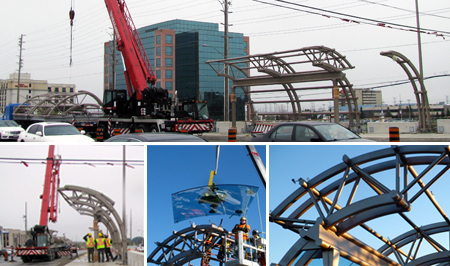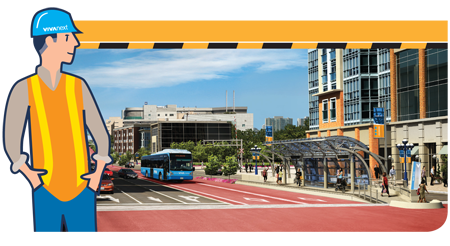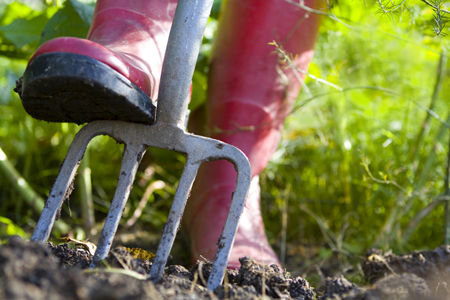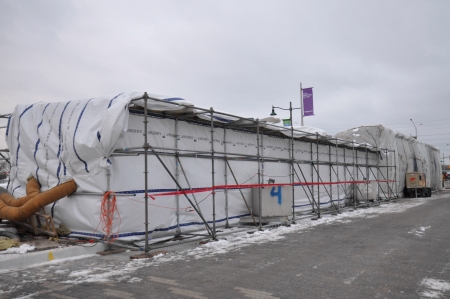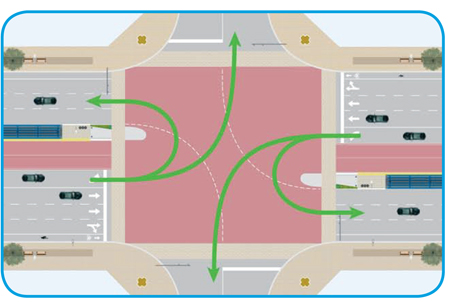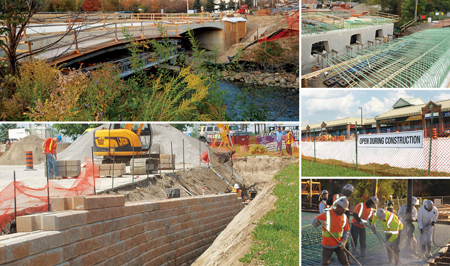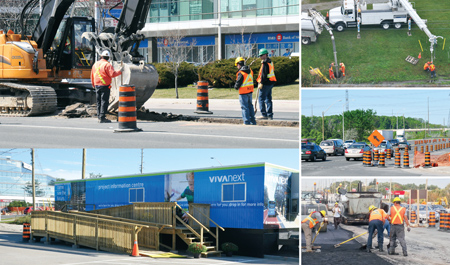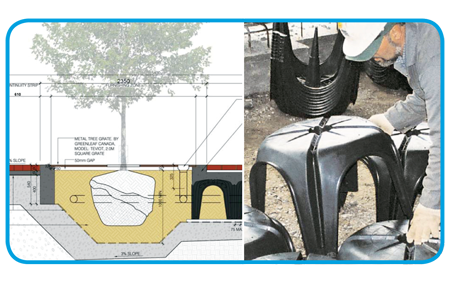
Among the beautiful benefits of the vivaNext project will be the improvements we’re going to make to the streetscape along York Region’s key corridors. A key part of those improvements will be carefully planned landscaping, including street trees planted at regular intervals for beauty and shade. Ensuring those trees survive in a tough urban environment is always a challenge, which is where science and technology come in.
Fortunately, our Landscape Architects are up to the challenge, and have tricks up their sleeves to keep our trees healthy and growing strong. To begin with, choosing the right tree is critical. Street trees, especially ones along roads carrying a lot of fast-moving traffic, need to be the kind that can stand up to salt spray and pollution from vehicles. Street trees also need to be relatively drought tolerant, and able to thrive without daily maintenance.
To meet these needs, our Arborist and Landscape Architects focused on a range of hardy trees, including different types of gingko, oak, maple, common hackberry, Kentucky coffee tree, ornamental pear and elm.
Once they’d solved the issue of which trees to plant, Landscape Architects turned to the other big problem facing urban plantings: large trees need a lot of soil around their roots. In a boulevard, there’s only so much room for soil, so trees generally don’t have the underground space they need to grow strong roots and take in nutrients. Our team is using an ingenious solution called “soil cell technology.” This refers to the cutting-edge approach of constructing a rigid form underground that can be filled with soil and then covered up by sidewalks or even roads.
Our soil cell technology is called Cupolex®, and was originally designed as a technique to provide a solid underground framework for ductwork and cables. At first glance it looks like a plastic patio table, with hollow legs at each corner. A series of these patio tables are installed underground, with their legs interlocking, forming a large honeycomb shape – a soil cell – surrounding where the tree will be planted. Then concrete is poured into the legs and over the top, creating a hard, self-supporting shell strong enough to support the weight of vehicles. The boulevard and sidewalks are constructed right over top, with openings left for planting trees. Special access hatches and irrigation pipes are installed for future tree maintenance, and then nutrient-rich soil is blown in, and trees are planted in the openings.
We’re not talking a regularly sized planter full of soil: each soil cell holds at least 16 cubic metres of soil. And each cubic metre is about the size of a stove, so imagine 16 stoves worth of soil for each tree! A typical dump truck holds 8-10 cubic metres, so each tree is going to get more than a dump truck of soil. That’s a lot of soil, and it’s really going to help our trees’ survivability.
Our vivaNext pledge is to do the best planning now, for a beautiful and functional rapid transit system and streetscape. Creating healthy, strong trees that can be enjoyed for generations is part of that, and it’s something we can all be proud of.
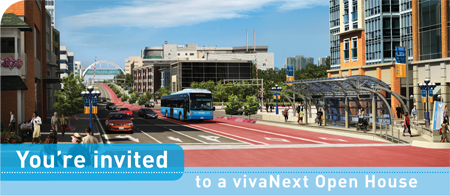 As you may have noticed, construction on Davis Drive is well underway. As construction continues each day, we want to make sure you are in the know about what is happening in your neighbourhood. Please join us at our open house meeting on Tuesday, May 15, 2012 to learn more about the rapidway construction in Newmarket along Davis Drive. You’ll have the opportunity to read up on maps and information boards, and speak with vivaNext representatives about what is to come for Davis Drive. This is a great chance to learn about how rapidways will benefit Newmarket and you as a resident.
As you may have noticed, construction on Davis Drive is well underway. As construction continues each day, we want to make sure you are in the know about what is happening in your neighbourhood. Please join us at our open house meeting on Tuesday, May 15, 2012 to learn more about the rapidway construction in Newmarket along Davis Drive. You’ll have the opportunity to read up on maps and information boards, and speak with vivaNext representatives about what is to come for Davis Drive. This is a great chance to learn about how rapidways will benefit Newmarket and you as a resident.
